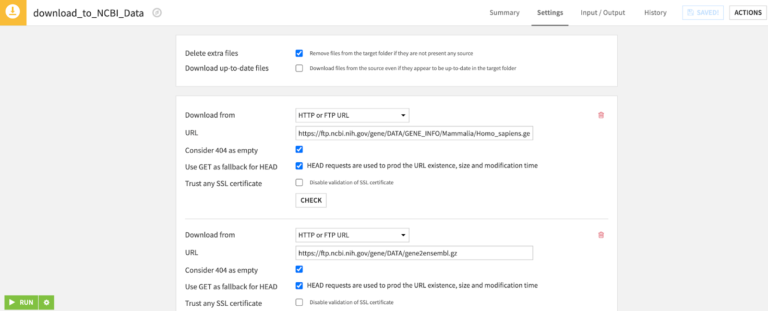Getting started
A ready-made project with clear flow zones and a full wiki to guide you through the different steps used to ingest external data via FTP and Postgre and transform it into a network graph ready for export to Neo4j.
Explore !The goal of this adapt and apply solution is to explore complex relationships between drugs, diseases, and genes to build a drug biomedical knowledge graph. Accelerate identification of drug repurposing opportunities. The initial solution was built in partnership with Neo4j and Linkurious. More details on the specifics and requirements of the solution can be found on the knowledge base. This solution is only available on installed instances.
The decline in R&D returns faced by the pharmaceutical industry combined with the increase in both development timelines and the complexity of investigated diseases acts as a catalyst to identify opportunities for the repurposing of drugs.
As part of this procedure, pharmaceutical companies leverage multiple data sources notably on drug structures, gene targets, pathway perturbations, disease symptoms, and more to explore potential beyond initially approved indications. This can lead to much shorter and therefore cheaper (by over 80%) R&D timelines for a new indication. By reusing existing drug compounds, pharmaceutical companies also maximize their chances for market introduction (by 150% compared with a novel drug).
It was estimated in 2014 that repositioned drugs generated $250 billion in sales worldwide; that is, approximately, one-quarter of the pharmaceutical industry’s annual revenue, with five such drugs each generating over $1 billion in their new indication.
But this is far from being a simple exercise, with the need for thorough investigations to identify hidden patterns. Leveraging graph analytics approaches provides a powerful accelerator to complex data structure representations and speeds understanding of complex relationships between drugs, symptoms, genes, diseases, and more, acting as a catalyst for opportunities identification.

A ready-made project with clear flow zones and a full wiki to guide you through the different steps used to ingest external data via FTP and Postgre and transform it into a network graph ready for export to Neo4j.
Explore !
Easily connect to and download data from external URLs using visual recipes. Automate these downloads to keep your workflow up to date.
Explore !
Once nodes have been identified in your data, create relationships between two nodes via visual join recipes to identify novel patterns and new indications.
Explore !
Ingest built graphs into Neo4j through Dataiku’s ready-made plugin and navigate graphs leveraging Linkurious Enterprise.
Explore !
Start with open data and enrich your nodes with more data sources. Leverage the biomedical knowledge graph to understand drug and disease relationships via graph analytics to drive repurposing efforts
Explore !